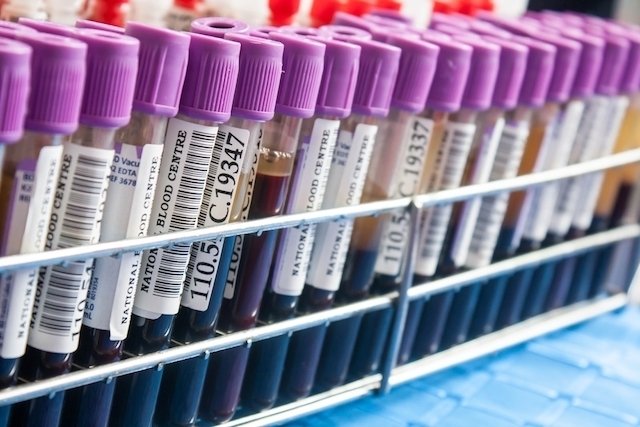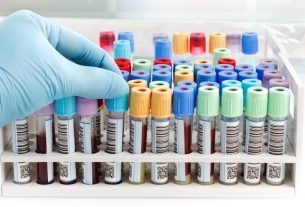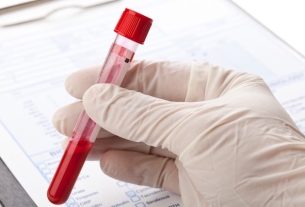PSA, known as Prostate Specific Antigen, is an enzyme produced by prostate cells whose increased concentration may indicate changes in the prostate, such as prostatitis, benign prostate hypertrophy or prostate cancer, for example.
Normally, the PSA blood test is indicated at least once a year for all men over 45 years of age, but it can be used whenever there are suspicions of any urinary or prostate changes. The PSA test is simple and painless and is carried out in the laboratory by collecting a small blood sample.
An increase in total PSA concentration is not always indicative of prostate cancer, and other tests are necessary to confirm the diagnosis. However, in the case of prostate cancer, the PSA value may also remain normal and, therefore, the suspicion of cancer must always be confirmed with other diagnostic tests, such as digital rectal examination, MRI and biopsy.

Total and free PSA
PSA can be found in the blood, bound or not to proteins, and is therefore classified into:
- PSA deliverswhich corresponds to PSA that is circulating in the blood without being bound to proteins;
- PSA totalwhich corresponds to the total concentration of this enzyme, that is, it is the sum of PSA bound to other proteins and the free one.
When a man has a total PSA above normal, the urologist recommends a free PSA test to better assess the prostate.
What is the exam for?
In most cases, the PSA test is ordered by the doctor to assess the possible presence of a problem with the prostate, such as:
- Inflammation of the prostate, known as prostatitis (acute or chronic);
- Benign prostate hypertrophy, known as BPH;
- Prostate cancer.
However, the PSA value may also be increased due to a urinary infection, urinary retention or due to the recent performance of a medical procedure in the region, such as cystoscopy, digital rectal exam, biopsy, prostate surgery or transurethral resection of the prostate. Therefore, it is very important that the test result is evaluated by the doctor who ordered it.
In addition to these more common causes, increasing age, cycling and the use of some medications, such as male hormones, can lead to an increase in PSA.
Reference value of the PSA test
In general, the reference values for PSA are:
- Up to 65 years old: PSA total up to 2.5 ng/mL;
- Over 65 years old: PSA total up to 4 ng/mL.
The PSA value can vary depending on the person’s age, habits and the laboratory where the test was carried out. Normally, when an increase in the total PSA concentration is observed, the doctor recommends performing free PSA and then makes a relationship between free and total PSA.
When the relationship between free and total PSA is greater than 15%, it indicates that the prostate enlargement is benign, and may indicate that benign diseases are developing, such as benign prostate hypertrophy or urinary infection, for example. However, when this ratio is less than 15%, it is normally indicative of prostate cancer, and a prostate biopsy is recommended to confirm the diagnosis and begin treatment. Understand how a prostate biopsy is performed.
PSA density and velocity
The urologist can also evaluate the PSA density and velocity, and the higher the PSA density, the greater the suspicion of the presence of prostate cancer and, if the PSA velocity value increases more than 0.75 ng/ml per year or increases very quickly, it is essential to repeat the tests, as it may indicate cancer.
How to understand the exam results
When a man has a total PSA value greater than 4.0 ng/ml, it is recommended to repeat the test to confirm the value and, if it remains the same, it is essential to carry out other tests to confirm the diagnosis and identify the cause. Discover other tests to evaluate the prostate.
In most cases, the higher the total PSA value, the greater the suspicion of prostate cancer and, therefore, when the value is higher than 10 ng/ml the chances of developing prostate cancer are 50%.
Men with a PSA considered normal and with nodules on digital rectal exam have a higher risk of having prostate cancer than men who only have the highest PSA value.
Bibliography
- BRAZILIAN SOCIETY OF CLINICAL PATHOLOGY. Official Positioning of the Brazilian Society of Clinical Pathology/Laboratory Medicine (SBPC/ML) and the Brazilian Society of Urology (SBU) – Prostate Cancer Screening. 2018. Available at: <http://www.sbpc.org.br/wp-content/uploads/2018/11/SBPC_PSA_posimentação_final-1.pdf>. Accessed on June 14, 2021
- EUROPEAN ASSOCIATION OF UROLOGY. Guidelines on Prostate Cancer. 2020. Available at: <https://uroweb.org/wp-content/uploads/EAU-EANM-ESTRO-ESUR-SIOG-Guidelines-on-Prostate-Cancer-2020.pdf>. Accessed on June 14, 2021

Sign up for our newsletter and stay up to date with exclusive news
that can transform your routine!
Warning: Undefined array key "title" in /home/storelat/public_html/wp-content/plugins/link-whisper-premium/templates/frontend/related-posts.php on line 12
Warning: Undefined array key "title_tag" in /home/storelat/public_html/wp-content/plugins/link-whisper-premium/templates/frontend/related-posts.php on line 13



